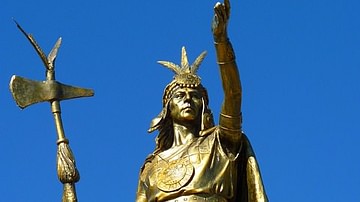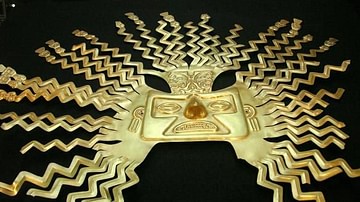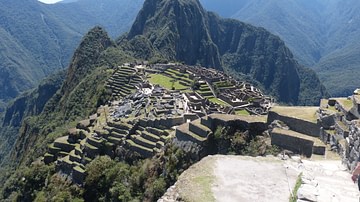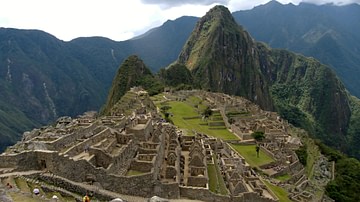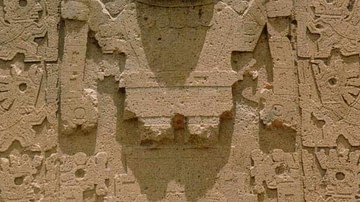The Inca civilization of Peru, as with many other ancient Andean cultures, mummified many of their dead and buried them with valuable materials such as precious metal jewellery, fine pottery, and sumptuous textiles. Important mummies could also be periodically removed from their tombs to participate in ceremonies where they were also offered food as if they were still living persons. Those mummies (mallki) which escaped looters have, in most cases, been excellently preserved, thanks to the dry climate of the Andes region, and they provide a unique insight into the culture, religious practices, and everyday life of the Incas.
Ancestor Worship
Mummification was only one type of burial employed by the Incas and was an ancient Andean manifestation of ancestor worship which illustrates a deep reverence for older generations (ayllu) and kinship within communities. Considered a link between the living and the gods, these mummies could also be taken from their resting place and 'consulted' on important occasions so that their knowledge might serve the living community. Given places of honour and offered food and drink, mummies were involved in such ceremonies as marriages, sowing, and harvesting, or when long journeys had to be undertaken by individuals within the community.
Preservation of the body was achieved by desiccation or freeze-drying, processes helped by the natural climate conditions in certain areas such as deserts and the high sierras. Bodies could also be treated and preserved using alcohol (from chicha maize beer). Earlier Andean cultures had used salt as a preservative and often de-fleshed the corpse and removed bodily fluids prior to internment. Mummies were placed in a fetal position and wrapped into bundles using several layers of textiles, bound with cords, and sometimes with a cloth head added. Mummies could be interred in caves or dedicated rooms within a community, often in groups, and these chambers were reopened every so often so that new mummies could be added. High status individuals were clothed and wrapped in particularly fine textiles and jewellery. The deceased's possessions were interred along with their owner, sometimes also with the tools of their particular profession.
Sacrificial victims, including children (capacocha), could also be mummified and placed in mountain-top shrines and other sacred sites (huaca). These were usually freeze-dried and their primary function may have been to reinforce Inca control over conquered provinces.
One of the most remarkable sites for mummified remains is the area around Cajatambo in the highlands of central Peru. No fewer than 1,825 ancient mummies were recorded by the Spanish in the 17th century CE. Here mummies were stored in sacred caves known as machay and, dressed in finery, they were periodically offered food and drink so that, having become part of the landscape themselves, their consultation would guarantee a fruitful harvest.
Royal Mummies
Due to looting by the conquistadores and subsequent grave robbers, very few tombs of the aristocracy have been discovered intact, but we do know about the royal mummies of the Inca capital Cuzco from written accounts. At the Coricancha religious complex at Cuzco, there was a dedicated space for the mummified remains of former Inca emperors and their wives, known as mallquis. Within these chambers, the mummified rulers were surrounded by their weapons and artistic treasures, as the Incas believed that the dead ruler remained the owner of the property he had accumulated in life.
Rather than the simple desiccation method, royal mummies got the deluxe treatment of entrails and organ removal, embalming, and skin tanning; they could even be set for eternity in a life-like posture. These mummies were brought out of storage during special ceremonies, such as those celebrating the solstices, and placed in a ring in order of their age in the open air of the main plaza, the Awkaypata or 'Terrace of Repose'. Each had a dedicated attendant who interpreted their wishes and stood by with a fly whisk. These regal mummies were dressed in fine clothes, gold ornaments, and exotic feathers. As though still living, offerings of food and drink were made to them, and the great achievements they had made during their reigns were read out for all to hear. Thus, a link was forged between present and past generations.
So venerated were these royal mummies that when the Spanish arrived, they were repeatedly moved around Cuzco to avoid their capture and destruction by the Europeans, who considered their reverence as idolatry. Ultimately, though, they were discovered and destroyed in 1559 CE. One Spaniard, Garcilaso de la Vega, described them as follows:
Their bodies were so perfect that they lacked neither hair, eyebrows nor eyelashes. They were in clothes such as they had worn when alive...They were seated in the way Indian men and women usually sit, with their arms crossed over their chests, the right over the left, and their eyes cast down...I remember touching a finger of the hand of Huayna-Capac. It was hard and rigid, like that of a wooden statue. The bodies weighed so little that any Indian could carry them from house to house in his arms or on his shoulders. They carried them wrapped in white sheets through the streets and squares, the Indians falling to their knees and making reverences with groans and tears... (D'Altroy, 97-99)

